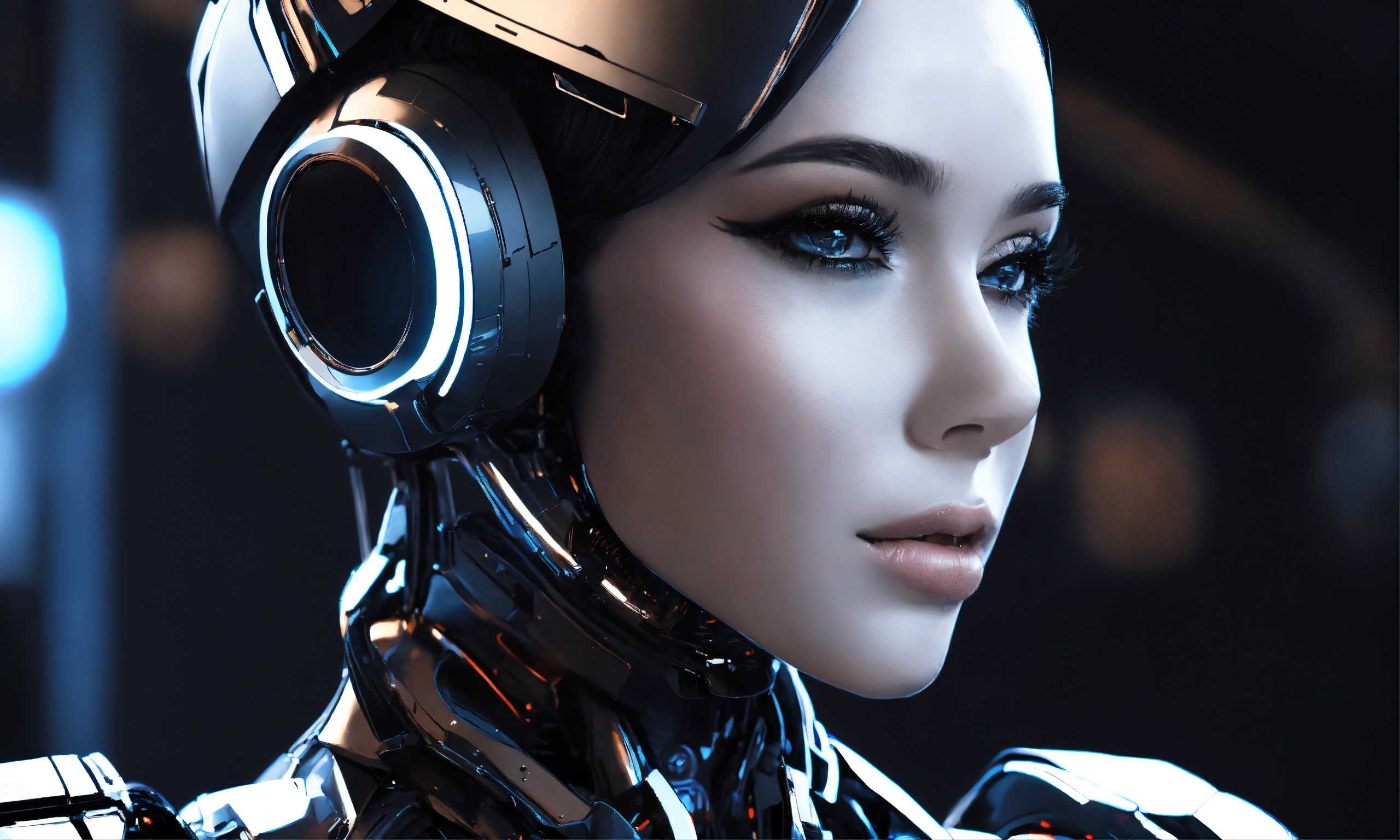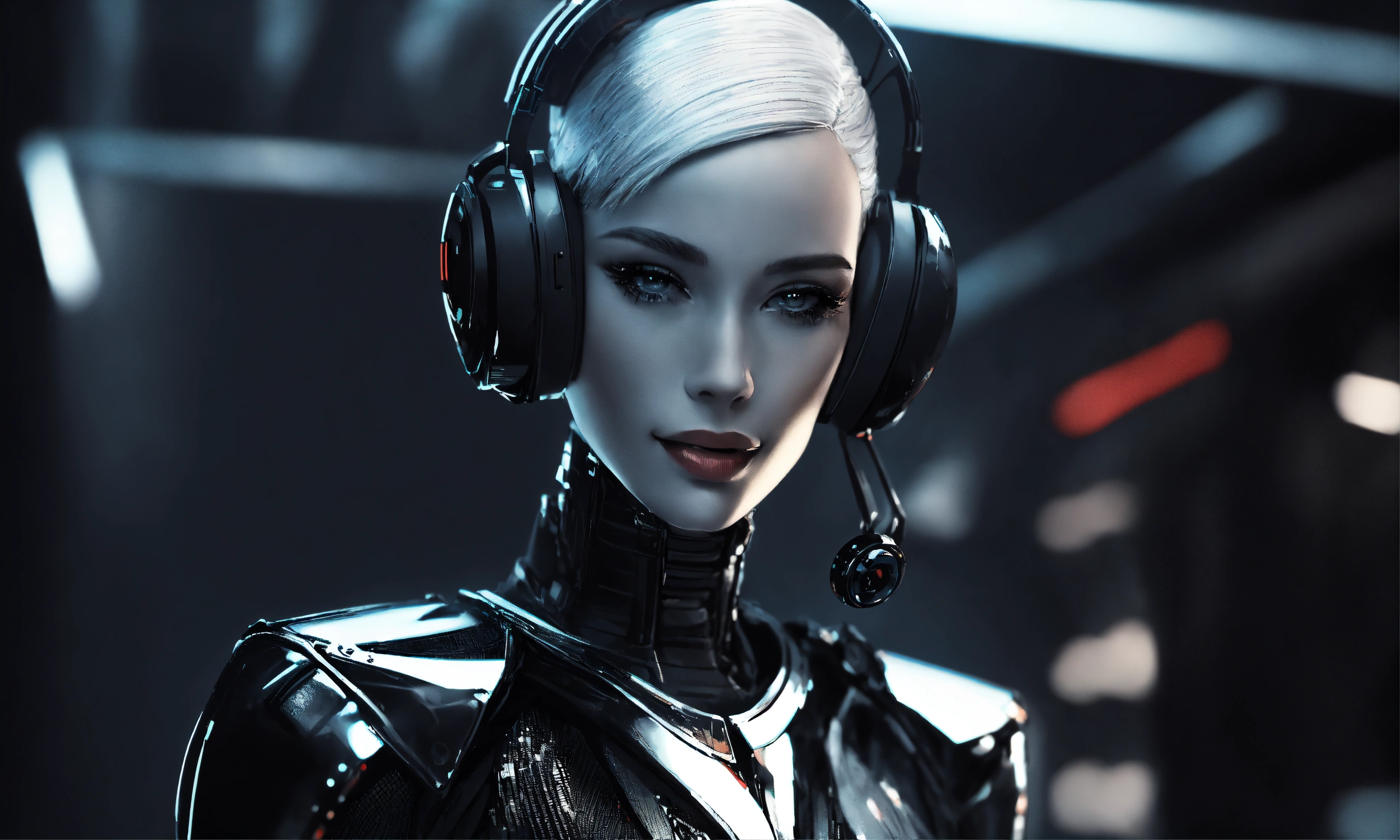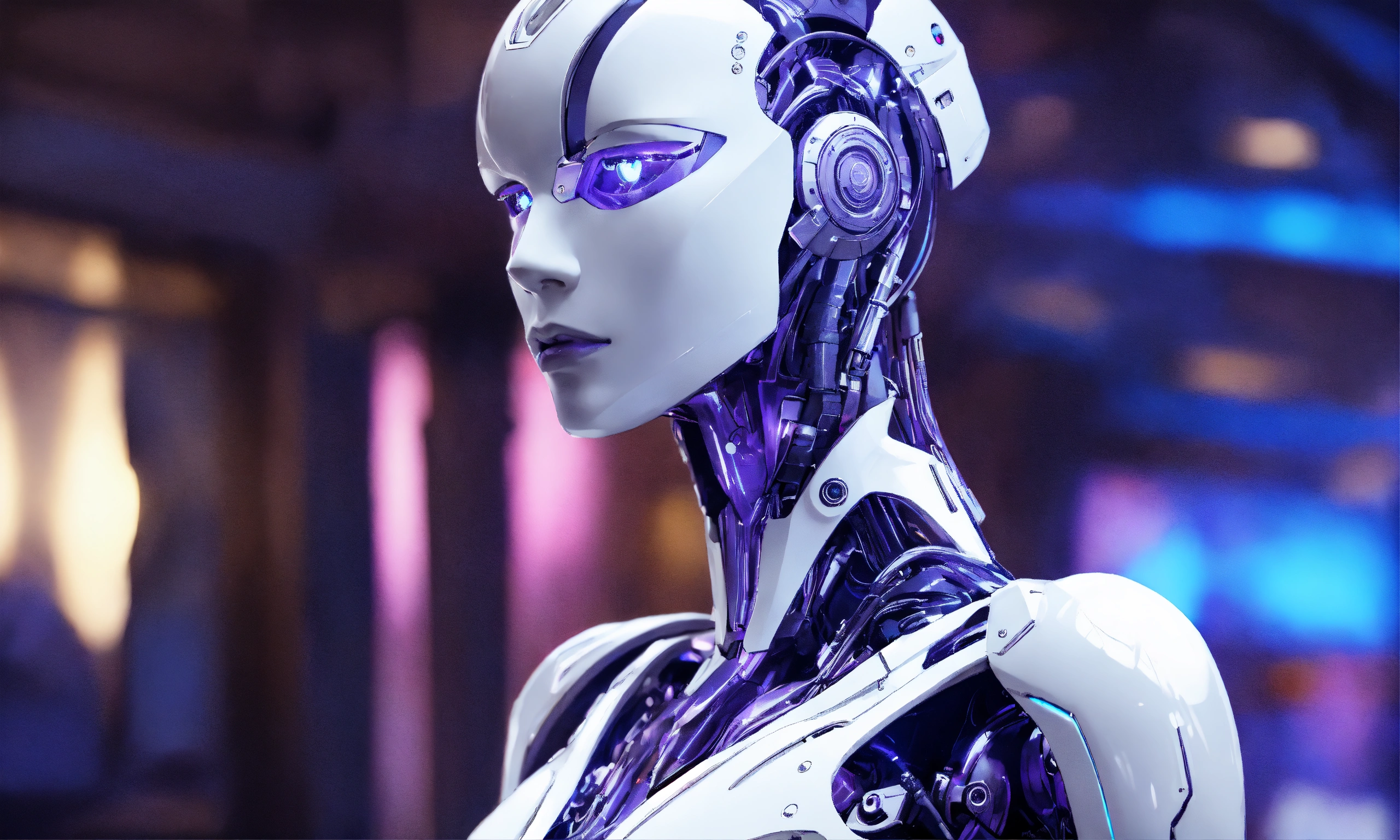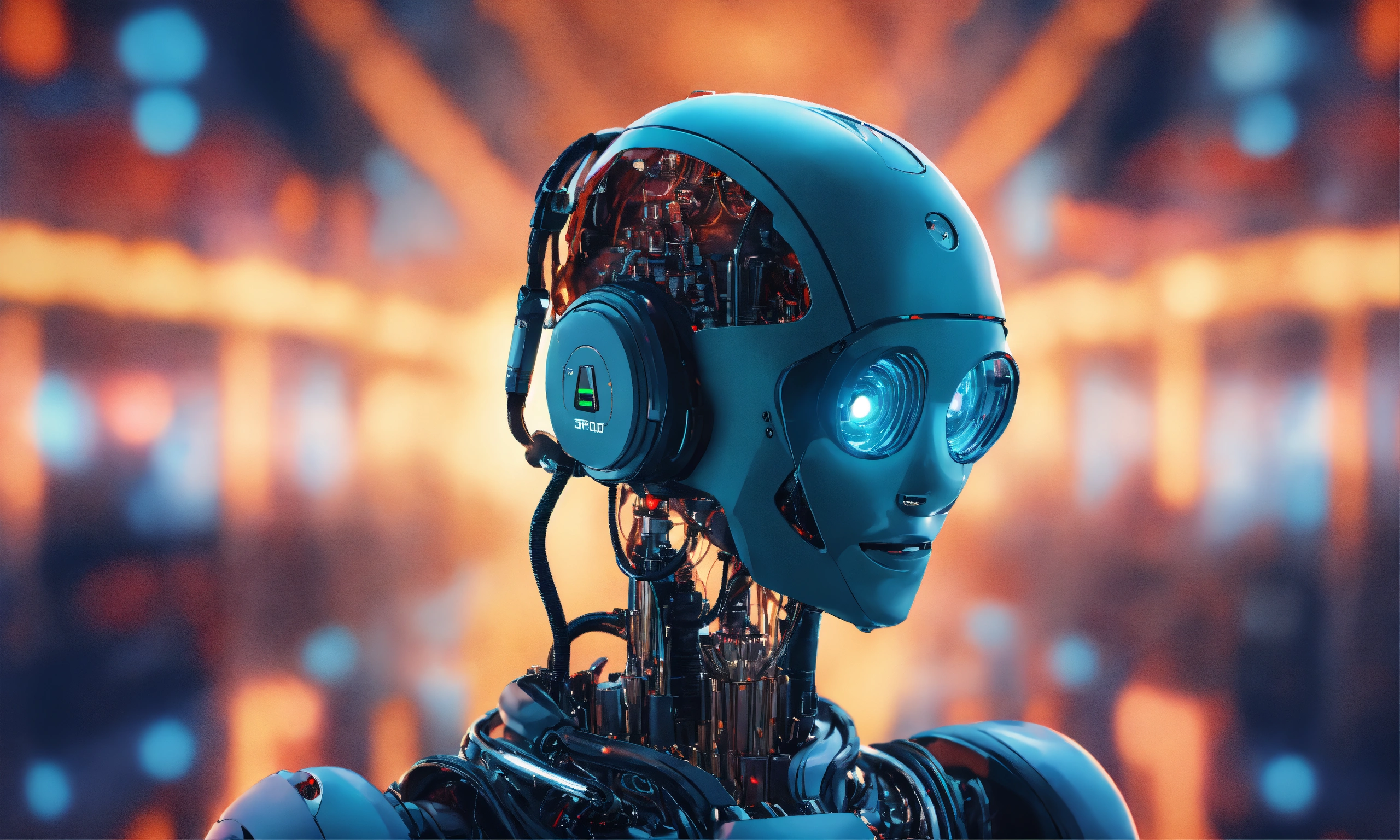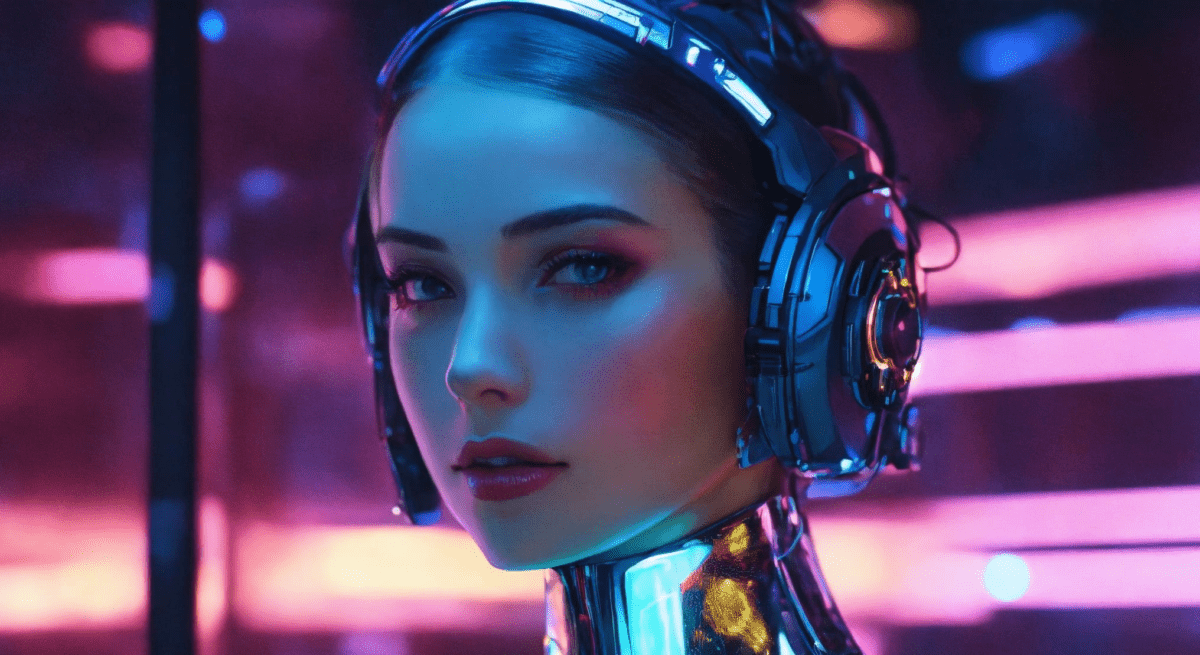Creating an AI Chatbot: Tutorial for Beginners
A detailed guide to modern chatbots, their development and implementation in business processes

Let’s agree that modern chatbots have taken over the tech market. AI is so advanced that it’s being used everywhere — from chatting with companies, generating images, and assisting writers, to simply providing entertainment. But maybe building an AI chatbot is easier then we can imagine? Maybe chatbot creation process is accessible to everyone?

The first thing that comes to mind is this: you need to understand m-learning algorithms. Plus, you need to know programming languages, have IT experience, and so much more…
But is it really that hard to get an intelligent chatbot without coding experience? Let’s find out.
This article will detail chatbots and explain why it’s crucial to leverage AI to grow your business.
We will examine what AI chatbots are, the reasons behind their significant impact on the tech market, and how you can develop your own AI chatbot platform.
We’ll explore the various types of chatbots, from simple rule-based systems to advanced AI-driven bots, and look into their applications across different industries, including customer service, healthcare, education, and entertainment.

Building an AI Chatbot: basics
How Do Chatbot Platform Work?
Chatbots work by using a combination of programming, machine learning algorithms, and natural language processing (NLP) to interact with users. Here’s a simple breakdown of how chatbots function:
- User Input: The user types or speaks a message. This can be a question, a request, or a command.
- Input Processing: The AI chatbot receives and processes the input. If the bot uses NLP, it analyzes the text to recognize keywords, intents, and context.
- Understanding Intent: The chatbot determines what the user queries (e.g., asking about a product, requesting information, placing an order). Machine learning models trained on large datasets help with this.
- Finding the Response: Based on the identified intent, the chatbot selects an appropriate response. This could be a pre-programmed reply, information from a database, or a generated text using AI models.
- Responding to the User: The AI chatbot sends the response back to the user in text or voice format. More advanced systems might include visual elements like images or links.
- Learning and Improvement: Modern chatbots use machine learning methods to improve their responses. They analyze previous interactions to enhance the accuracy and quality of future replies.
Main Types of Chatbots
- Rule-Based Chatbots: These chatbots follow predefined rules and patterns. They are limited in their capabilities and can only respond to questions anticipated in their programming.
- AI-Powered Chatbots: These bots use m-learning algorithms and NLP. They are more flexible and can handle a wide range of requests, learning from user intent.
Applications of Chatbots
- Customer Queries Service: Automating responses to frequently asked questions, helping solve problems, and supporting customers in conversation flow.
- Healthcare: Assisting with appointment scheduling, providing medical information, and sending medication reminders.
- Education: Tutoring and helping students, conducting interactive lessons, and providing study materials.
- Entertainment: Games, quizzes, content generation, and interactive stories.
Chatbots are becoming increasingly popular because they can enhance user experience and automate routine tasks, making them valuable tools in various fields.

What is M-Learning?
Machine learning involves algorithms and models that enable computers to learn from data and make predictions or decisions without explicit programming for each specific task.
Let’s explore the primary types of m-learning algorithms and some examples.
Supervised Learning
In supervised learning, the algorithm is trained on labeled data, where each training example includes an input and the corresponding correct output.
Examples:
- Linear Regression.Used to predict numerical values based on input data, such as predicting house prices based on square footage and location.
- Logistic Regression.Used for classifying data into two categories, such as spam versus non-spam emails.
- Decision Trees.Algorithms that create a decision tree for classification or regression based on a set of rules.
Unsupervised Learning
In unsupervised learning, algorithms analyze unlabeled data to discover hidden patterns or structures.
Examples:
- Clustering.A method that groups data into clusters, where data points in the same cluster are more similar to each other than to those in other clusters, like the k-means algorithm.
- Dimensionality Reduction.Algorithms that reduce the number of features in the data while maintaining important characteristics, such as Principal Component Analysis (PCA).
Reinforcement Learning
In reinforcement learning, the algorithm learns by interacting with the environment, receiving rewards for correct actions and penalties for incorrect ones.
Examples:
- Q-Learning.An algorithm that creates a table of rewards for various actions in different states and optimizes the policy to maximize overall rewards.
- Deep Q-Network (DQN).An advanced version of Q-learning that utilizes neural networks to manage complex and high-dimensional data.
Key Stages of Machine Learning Algorithms
- Data Collection. Data is gathered for training the algorithm.
- Data Preprocessing. Data is cleaned, normalized, and transformed into a format suitable for training.
- Data Splitting. Data is typically divided into training and test sets to assess the model’s performance.
- Model Selection and Training. A suitable algorithm is selected, and the model is trained on the training data.
- Model Evaluation. The model’s performance is evaluated on the test set to ensure it can generalize to new data.
- Optimization and Tuning. The model is refined by adjusting parameters, adding new data, or modifying the architecture.
Examples of Machine Learning Applications
- Image Recognition. Classifying objects in images, such as facial recognition.
- Natural Language Processing. Text translation, sentiment analysis, and text generation.
- Recommender Systems. Suggesting products, movies, or music based on user preferences.
- Financial Forecasting. Market analysis and stock price prediction.
M-learning is rapidly advancing and finding applications across various fields, enhancing convenience and security in our lives.

Chatbots: Fundamentals
Chatbots, utilizing artificial intelligence (AI) and m-learning, engage in text or voice-based communication with users.
Let’s delve into why they’ve garnered immense popularity and stirred up the technology market.
Understanding Chatbots
Chatbots serve a multitude of purposes, including:
- Customer Support: Addressing FAQs, aiding in order processing, and resolving issues autonomously.
- Online Consultation: Assisting users in product selection, offering recommendations, and facilitating purchases.
- Entertainment: Engaging users with jokes, stories, or casual conversations.
- Education: Facilitating learning through queries, assessments, and explanations.
Factors Driving AI Model Popularity
- 24/7 Availability: Chatbots offer uninterrupted assistance, crucial for globally operating businesses.
- Speed and Efficiency: Instant responses minimize wait times, enhancing user satisfaction.
- Resource Optimization: Automating routine tasks reduces operational costs.
- Personalization: Analyzing user data enables tailored interactions, enriching the user experience.
- Integration Flexibility: Integration with diverse systems enhances efficiency and ensures up-to-date information.
Functionality of Chatbots
Chatbots employ natural language processing (NLP) to comprehend and process human speech.
Trained on extensive datasets, they recognize varied question formulations to provide accurate responses. Increased data enhances the intelligence and precision of AI chatbots.

Successful Chatbot Examples
- Apple’s Siri and Amazon’s Alexa: Assist users with tasks like messaging, reminders, and smart home control.
- Chatbots in Banking: Facilitate transactions, balance inquiries, and financial guidance.
In Summary
Chatbots’ accessibility, responsiveness, and personalization capabilities drive their popularity, revolutionizing customer service and resource management.
Advancing technologies ensure smarter, more versatile chatbots, meeting escalating market demand.

Types of Chatbots
Let’s go over the various types of chatbots, starting from simple rule-based ones and ending with advanced AI-powered ones.
Simple rule-based chatbots:
- These chatbots use a set of predefined rules and responses to interact with users.
- They can provide standard responses to typical questions but are not capable of adaptation or self-learning.
Enhanced chatbots:
- These chatbots can employ multiple rules and conditions for more complex interactions.
- They can remember previous user responses and adapt their reactions accordingly.
Machine learning chatbots:
- These chatbots use m-learning algorithms to analyze and understand user requests.
- They can learn from user queries and improve their skills over time.
Artificial intelligence (AI) chatbots:
- These chatbots are equipped with advanced artificial intelligence algorithms for more accurate and natural interactions with users.
- They can utilize natural language processing (NLP) and m-learning to understand context and provide relevant responses.
Hybrid chatbots:
- These chatbots combine various technologies such as rules, m-learning, and AI for optimal interaction with users.
- They can employ different methods depending on the type of query or situation.
Each type of chatbot has its own advantages and limitations, and the choice of a specific type depends on the needs and goals of the company or project.

Spheres of Chatbot Platforms Application
Let’s discuss the application of custom chatbots. There are many of them, each with its own features and functions. Let’s delve into it in more detail:
Informational Chatbots.
These chatbots are designed to provide information about the company, product, or service.
They can answer frequently asked questions, provide guides or instructions, and assist users with basic questions.

Transactional Chatbots.
These chatbots help users perform various transactions, such as purchases, bookings, or bill payments.
They are typically integrated with payment systems and websites, allowing users to take action directly in the chat.
Entertainment Chatbots.
These chatbots are created to entertain users by offering games, jokes, riddles, and stories.
They can be useful for leisure and entertainment in free time.
Educational Assistants.
These chatbots are designed to assist in education by offering educational materials, tests, assignments, and explanations of complex concepts.
They can be beneficial for both students and teachers.

Customer Support.
These chatbots are intended to assist users with various questions and issues related to company products or services.
They can provide real-time support in chatbot conversation, resolve issues, or direct users to specialists.
Personal Assistants.
This chatbot solution is created to provide personal assistance to users in performing various tasks, such as organizing schedules, setting reminders for events, or searching for information.
Each type of AI chatbot has its advantages and applications in different fields. The choice of your intelligent chatbot type depends on the needs and goals of the company or user intent.

Chatbot Development Without Experience
It’s simple — reach out to experts in the field. AI is rapidly advancing, but only a few companies can offer you high-quality services. Developing an own chatbot, especially if you are new to the process, can be daunting.
However, with the right guidance and expertise, you can create an AI chatbot as powerful tool that enhances customer interaction and streamlines operations.
What We Can Offer To Your Business?
Scrile offers a comprehensive suite of services designed to assist you in building AI solutions from the ground up.
Whether you need a chatbot development for customer conversations, sales, collect feedback or any other function, Scrile’s team of seasoned professionals is equipped to deliver tailored solutions that meet your exact specifications.

The process begins with understanding your unique business needs. Scrile’s experts work closely with you to define the objectives and functionalities required for your chatbot.
This collaborative approach ensures that the final product not only meets but exceeds your expectations.
Once the initial planning phase is complete, Scrile’s development team leverages the latest AI technologies to create a robust and scalable chatbot. They handle everything from natural language processing to user interface design, ensuring that the chatbot is intuitive and user-friendly.
But Scrile’s services don’t stop at development. They also offer seamless integration of the chat widget into your existing systems.

Whether you are incorporating it into a website, a mobile app, or a social media platform, Scrile ensures that the integration process is smooth and efficient, minimizing any disruption to your operations.
Moreover, Scrile provides ongoing support and maintenance to ensure that your custom chatbot continues to function optimally.
As your business grows and evolves, your chatbot can be updated and enhanced to meet new demands and challenges.

Unique AI projects for your business, such as chatbot solutions, are developed entirely according to your requirements. This means that every aspect of the chatbot development, from its features to its personality, is designed with your brand in mind. The result is a highly personalized tool that aligns perfectly with your business goals and customer expectations.
In summary, if you’re looking to develop a chatbot but lack the experience, turning to experts like those at Scrile is a smart move.
We offer a full range of services from initial consultation to ongoing support, ensuring that you get a high-quality, customized AI solution. All you need to do is contact us, and we will take care of the rest.
Key Advantages of Scrile AI
Quality.
At Scrile, ensuring high-quality products is our top priority. We are dedicated to delivering solutions that not only meet but exceed your expectations. Our experienced team meticulously crafts each product, paying close attention to detail to ensure that it aligns perfectly with your requirements and delivers exceptional performance.
From concept to deployment, we uphold rigorous quality standards to guarantee that the final product is of the highest caliber.
Fast to Market.
Our priority is to ensure that your AI solutions are swiftly deployed to meet your company needs. We understand the importance of speed in today’s competitive landscape, which is why we focus on rapid development and deployment without compromising on quality.

Quick Deployment of Robust AI Solutions.
We specialize in developing robust AI solutions that are not only powerful but also agile enough to adapt to changing biz requirements.
Our streamlined development process ensures that your AI solutions are deployed quickly and efficiently, allowing you to start reaping the benefits sooner.

Fully Customizable Solutions That Grow With Your Business.
Our AI solutions are designed to be scalable and flexible, allowing them to grow and evolve alongside your business.
Whether you’re a small startup or a large enterprise, our solutions can be customized to accommodate your changing needs and scale seamlessly as your business grows.

FAQ
Can I Create My Own AI Chatbot for Customer Queries?
Yes, you can get a custom bot either by developing it yourself or by turning to Scrile. In the latter case, you won’t have to deal with NLP, programming languages, or any technical complexities.
How Long Does it Take to Build an AI chatbot?
Everything is depending on the bot’s scope, the time required to build your knowledge base, and its technical complexity.
How Hard Is it To Build an AI?
Developing chatbots is incredibly accessible and achievable for everyone. You can collaborate with a team of experts. Scrile will deliver not only a ready-to-use platform tailored for your business but also ensure it stands out uniquely.
There’s no need to stress over the complexities of development — the Scrile’s team handles everything for you.

Read More Related Articles
AI Girlfriend: A Comprehensive Guide
Discover the world of AI girlfriends and how they are transforming virtual companionship. Explore the technology behind these AI-powered entities and their impact on human relationships.
Creating AI Avatars: A Step-by-Step Guide
Learn the process of creating your own AI avatar. From initial design to implementation, this guide covers everything you need to know to bring your digital persona to life.
OnlyFans AI: Revolutionizing Content Creation
Explore how AI is revolutionizing platforms like OnlyFans by enhancing content creation, personalization, and user engagement through advanced technology.
AI Text Message Generator: Enhancing Communication
Dive into the world of AI text message generators and how they are improving communication through automated, personalized, and context-aware messaging.
AI Transcription: Transforming Speech to Text
Learn about AI transcription services and their role in converting speech to text accurately and efficiently, revolutionizing various industries.
